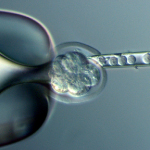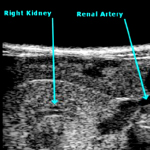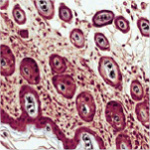Histopathology
Pathology is the link that connects basic research and clinical practice. It is the primary discipline that handles diseased tissue and provides the interpretation of these specimens, enabling clinicians to make informed decisions about patient care. Pathology traditionally has provided morphologic interpretation of specimens from affected tissues and organs, yet it is known that lesions are characterized by multiple genetic and epigenetic alterations. While knowledge of these molecular changes in human disease continues to expand, the ability to translate this information into routine clinical practice is lagging. Today, pathologists must analyze tissue samples not only on the basis of morphology, but also at the level of genetic and epigenetic events.
Mouse disease models have enormous potential as a further link between preclinical, mechanistic research and clinical practice. It is now clear, however, that the rate-limiting step in functional analysis of mutant mice in the future will not be the availability of mouse models, but may instead be the availability of well-trained and expert pathobiologists to engage with and contribute to the effort.
The Mouse HistoPathology Unit (MHIP) offers extensive technical and scientific expertise to support pathology requirements of scientists, ensuring consistent and reliable results. The role of the comparative pathology in the field of experimental studies on laboratory animal is of interest for:
- supplying routinary histologic and immunophenotipical techniques, evaluating the more suitable procedure, based on the expected results
- indentification and evaluation of experimentally induced lesions
- setting of animal models of human diseases
- efficacy and safety studies
- phenotyping of transgenic mice
- evaluation of experimental model correlating the animal models with the human physiologic and/or pathologic counterpart





